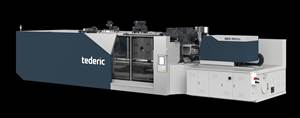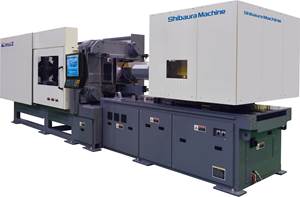New Materials on a Fast Track for Molded Auto Glazing
Injection molding of polycarbonate automotive window and roof glazing is an emerging market that offers weight savings up to 50%, greater styling freedom and potential for parts integration (ribs or brackets) that glass cannot match.
Injection molding of polycarbonate automotive window and roof glazing is an emerging market that offers weight savings up to 50%, greater styling freedom and potential for parts integration (ribs or brackets) that glass cannot match. The latest news includes a host of developments in materials, additives, in-mold film inserts, and coatings.
Directions in materials
Three material suppliers, Bayer MaterialScience, GE Plastics, and Teijin in Japan are leading materials development for auto glazing. Volkhard Krause, v.p. of Bayer MaterialScience’s automotive glazing 911▒¼┴¤═° unit, says the company is exploring several enhancements for its Makrolon AG 2677 polycarbonate, which he says accounts for 70% of current commercial auto-glazing applications. “We have completed research in color development for this transparent material,” Krause told Plastics Technology. He said Bayer MaterialScience has created a broad range of dyes and pigments that can impart a light or dark green, gray, or other tint.
Other projects are exploring new ma terials besides PC for the second-shot material typically used as a structural frame for the glazing. “Starting with a polycarbonate panel, different functions can be integrated in the second shot with a single mold,” says Krause. One of Bayer MaterialScience’s latest developments for the second component is a new grade of Makroblend PC/PET containing 20% mineral filler. It is being used in the second shot of a 1.1 x 1.1 meter fixed panoramic roof for a new SUV. “This is the first auto-glazing application using mineral-filled PC/PET,” says Krause. He said the alloy brings superior optical properties to the glazing application.
Bayer MaterialScience is also looking at new combinations of PC and other materials that can incorporate a rubber-like seal in glazing parts. “We have a concept study looking at the adhesion between TPU and a coated or uncoated PC,” says Krause.
Both Bayer MaterialScience and GE are developing infrared-blocking grades that reduce heat flow through PC panels such as roof modules. Bayer MaterialScience says its IR-absorbing transparent colors can cut IR transmission up to 50%.
GE is investigating use of nano-technology (possibly nanoclays) to resist solar-energy transmission. The goal is to either reflect or absorb the heat to keep passengers in the vehicle cool, says Derek Buckmaster, global market director for body panels and glazing. GE is also developing custom pigments for tinted PC glazing using its new Lexan GLX grade. “The key is to use long-term stable pigments that won’t compromise light transmission or impact strength,” says Buckmaster. GE is also working on other property enhancements, such as sound damping. Other research involves overmolding materials such as a TPE or PC/PBT.
“We have programs looking to improve the manufacturing process and to lower the total cost of some parts,” adds Buckmaster. For example, GE is looking at different gating approaches for two-component molding and will add a 1600-ton, two-component press for glazing parts at its Plastic Global Technology Center in Bergen op Zoom, Netherlands, which already has a 2700-ton injection-compression press for PC development. Incidentally, Buckmaster predicts that the first PC backlight on a U.S. car will appear in the next 18 months.
Meanwhile, in Japan, Teijin is working with injection machine maker Meiki on auto-glazing materials development. Teijin has a 3400-ton, two-component machine from Meiki in its lab for making low-stress PC parts. It is the largest two-component machine built by Meiki.
New coating concepts
Exatec, the auto-glazing joint venture of Bayer MaterialScience and GE, has developed three versions of its 900 series PC coating system. The heart of its coating technology is a special glass-like plasma-enhanced chemical vapor deposition (PECVD) hard coating and abrasion layer, combined with a special long-lasting weathering layer called Exatec SHX and a water-based primer called Exatec SHP 9. The firm offers Exatec 900 for fixed glazing applications, and Exatec 900vt for vehicle top or panoramic roofs.
A newer product is Exatec 900 el, an electro-luminescent system that can illuminate car interiors in new ways. An interior light band can be integrated into the glazing panel, says Exatec CEO Clemens Kaiser. The light band is applied onto a film that is incorporated into the PC roof by a special process. The light-band consists of a stack of film layers containing electrically conductive and luminescent pigments. Electrodes connect the film to the car’s electrical system. When a voltage is applied, the pigments shine, and vehicle occupants can control the brightness. A broad range of colors is available. “It brings brightness without the heat. It is cool to the touch,” adds Kaiser.
Also new is Exatec Backlite Technology, which uses an in-mold film insert with preprinted electrical circuitry to incorporate rear-window heating/defrosting or a radio antenna into the molded glazing.
Related Content
Tederic Promotes High Technology, Broader Market Presence
Four cells are running in its booth including a 1,300-ton multimaterial system highlighting its 2K capabilities.
Read MoreCompletely Connected Molding
NPE2024: Medical, inmold labeling, core-back molding and Industry 4.0 technologies on display at Shibaura’s booth.
Read MoreMilacron’s Massive Booth Highlights Multiple Brands
NPE2024: Coinjection of postconsumer resin, in-mold decoration, LSR micromolding and bioplastics processing are just some of the machine displays at Milacron's booth.
Read MoreCompact Solution for Two-Component Molding
Zahoransky’s new internal mold handling technology foregoes the time, space and money required for core-back, rotary table or index plate technologies for 2K molding.
Read MoreRead Next
Lead the Conversation, Change the Conversation
Coverage of single-use plastics can be both misleading and demoralizing. Here are 10 tips for changing the perception of the plastics industry at your company and in your community.
Read MoreBeyond Prototypes: 8 Ways the Plastics Industry Is Using 3D Printing
Plastics processors are finding applications for 3D printing around the plant and across the supply chain. Here are 8 examples to look for at NPE2024.
Read More









